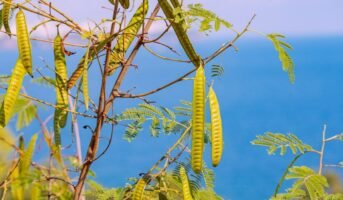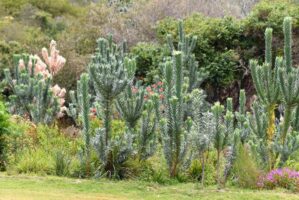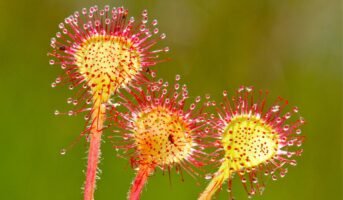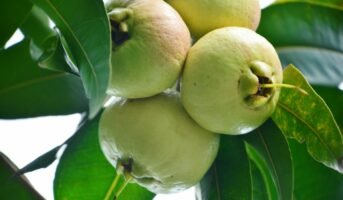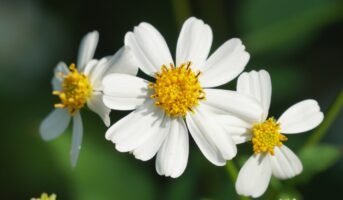Nyctanthes arbor-tristis is a flowering plant, widely known as Parijat in India, that produces flowers with white petals attached to an orangish tube in a pinwheel pattern. Also known as night-flowering jasmine, the plant belongs to the Oleaceae family, not the Jasminum genus. As per Hindu tradition, Parijat is considered as an auspicious flower. There are many mythological stories associated with it. The plant is used in Ayurveda owing to its medicinal benefits.
Read why Cape jasmine is a flower of choice across Indian homes?
Nyctanthes arbor-tristis: Quick facts
| Plant name | Nyctanthes arbor-tristis |
| Common names | Parijat, night-flowering jasmine, tree of sorrow |
| Family | Oleaceae |
| Found in | South Asia and southeast Asia |
| Flower | Fragrant flowers with white corolla and orange-red centre |
| Flower blooming season | Night-blooming, August to December |
| Benefits | Used in Ayurveda and Homoeopathy for treating arthritis, fevers, and sciatica |
Nyctanthes arbor-tristis: Significance of Parijat
As per Hindu tradition, Parijat flowers are auspicious as they are regarded as those belonging to the heaven. It is believed that one who owns this flower denotes love and never faces any hardship, as per ancient mythology. It blooms after Ganga Dussehra.
Further, the flower is unisex. It was believed to be given to Lord Krishna’s wives as a gift denoting love. Hence, it is auspicious for newlywed couples to grow this plant and promote love.
See also: How to grow Parijat at home?
Nyctanthes arbor-tristis: Medicinal uses
- The leaves of the Nyctanthes arbor-tristis plant find their use in Ayurveda and Homoeopathy for the treatment of sciatica, fevers, and arthritis.
- They are also used as a laxative for treating constipation.
- The plant has properties that help treat snake bites.
- Nyctanthes arbor-tristis helps in hair fall treatment, scalp recovery, and skin recovery.
- The leaves contain antibacterial and anti-inflammatory properties. Dried leaves of Nyctanthes arbor-tristis are used in Assamese food recipes.
known Also: Husk of Coconut: All you need to know
Nyctanthes arbor-tristis: Plant care
Sunlight and temperature
The plant is native to the tropical zone and prefers a hot climate. Place the plant exposed to sunlight for a minimum of four hours to a maximum of eight hours. In summer, keep the plant in sunlight for around four hours and bring in shade later.
Watering
The plant needs water daily in warm weather. Avoid standing or clogged water as excess water can damage the plant’s root system. Go for periodic deep watering for healthy growth.
Soil
Choose well-drained, fertile soil, rich in organic content.
Fertiliser
Provide the plant with sufficient well-decomposed compost and vermicompost. Use potassium-based fertilisers, or use onion, or banana peels fertiliser if you want the plant to produce flowers. Add phosphorous-rich, bonemeal fertiliser if it still does not bloom.
Pruning
Pruning the plant helps it to bloom. Regular trimming is regular as the shoots grow in different directions.
Pest management
The plant is prone to attacks by white flies, mites, leaf minors and aphids. Make sure to regularly wash the plant using strong water sprayer mist. Spraying neem oil is another good option to keep pests away.
Read also: Arabian Jasmine: Significance, uses, care and maintenance tips
Nyctanthes arbor-tristis: Tree of sorrow
The word arbor-tristis refers to a sad tree. Nyctanthes arbor-tristis is referred to as the tree of sorrow, as the flowers lose brightness during the day.
FAQs
Can we plant Parijat at home?
As per Vastu, it is considered auspicious to plant Parijat, or Nyctanthes arbor-tristis at home. The plant can be grown in the east, or north corner of the house.
What is the use of Parijat leaves?
Parijat leaves are used for medicinal properties to cure diseases such as cough, arthritis, worm infestation, and various fevers.
Harini is a content management professional with over 12 years of experience. She has contributed articles for various domains, including real estate, finance, health and travel insurance and e-governance. She has in-depth experience in writing well-researched articles on property trends, infrastructure, taxation, real estate projects and related topics. A Bachelor of Science with Honours in Physics, Harini prefers reading motivational books and keeping abreast of the latest developments in the real estate sector.

